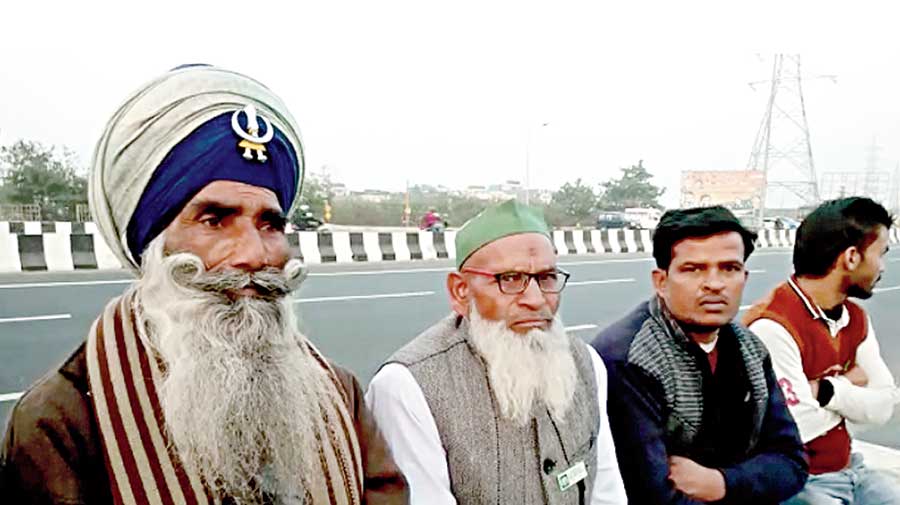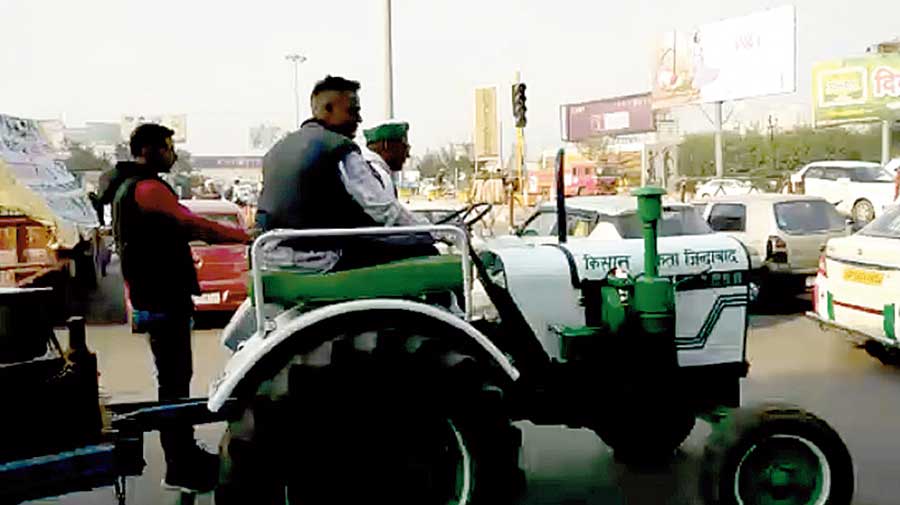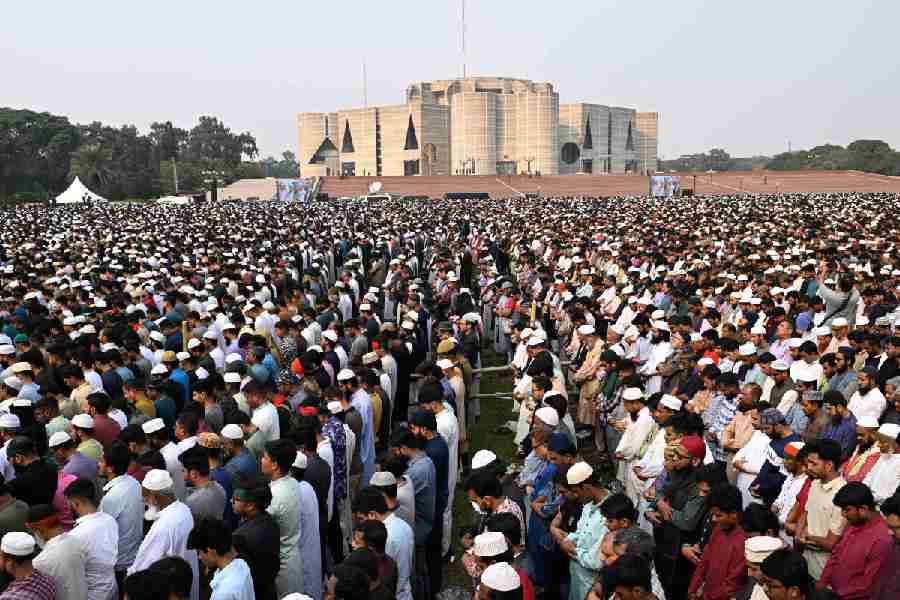In an evening light at a border, Amreek Singh from Pilibhit on the Uttar Pradesh-Uttarakhand border says he drove his tractor with a hitched trolley for 300km on a song.
Amreek Singh is from the Terai. He is 36 years old.
Where we are talking is the National Highway 24. In the distance is the garbage dump of Delhi’s refuse.

A scene at the National Highway-24 on the border between Uttar Pradesh and Delhi Telegraph picture
The tractor he drives is a “New Holland”. It has bass speakers fixed on metal pillars.
The border here is between Uttar Pradesh and Delhi. All in India. There is also, literally, a “No Man’s Land”. The distance between the rolled iron fence of the Uttar Pradesh police and the concrete brick barricade of the Delhi police is 100 metres.
It took less than that from my house on Sardar Sankar Road to Lake Market in south Calcutta.
On National Highway 24 that connects Calcutta and Lucknow to Delhi, there is a flyover at the border. There are barricades erected on the border. The border is on the flyover. The flyover anachronistically is a border.
There is music. Blaring from the speakers that have been attached to the pillars of a tractor. It is loud. And there is banner.

A scene at the National Highway-24 on the border between Uttar Pradesh and Delhi Telegraph picture
In the service-lane of the flyover where the police have erected a barricade, there is a placard reading “yahan section 144 laagu hain”. (Section 144 CrPC is imposed here onwards). Section 144 is a British colonial-era law that prohibits a gathering of five or more people.
Next to the banner on Section 144 is a poster that reads “Yahaan, kisanonka Section 288 lagoo hain”.
It is a take that mocks the police notification. It says, “if you have 144 that prohibits, we have 288 that gathers”.
From the distance to that banner, there is music playing. Actually a rock that beats to a sound of resistance.
India’s national capital New Delhi has six main highways that converge and dissipate. That was not so always. Before 1911, the capital used to be Calcutta.
The last time Delhi was gheraoed — surrounded — was in 1857. The year that is marked as “Sepoy Mutiny”.
In a moment to capture, Amreek Singh said: “It is not that we want to be here. We are here because we know we rule the country. Remember that in the midst of disease and death, people returned home to kheti (farming).”
He was seated on a divider that separates a service lane from the toll road. Next to him was a Nihang Sikh from Uttarakhand, Sardar Gurpreet. And there is Nafis Ali. He is not the customary Muslim in this story. He is here and he is real.
Today, farmers are on India’s and South Asia’s widest road. The Delhi-Meerut Expressway (DME). Indian citizens are being stopped from entering India’s capital. And they are being blamed.










